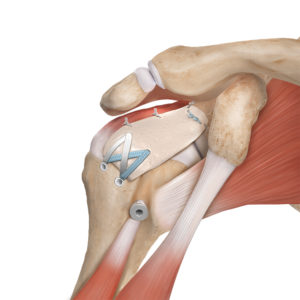The rotator cuff consists of a group of four muscles that reside deep in the shoulder area beneath the bulkier upper arm muscle called the deltoid. The four muscles termed the subscapularis, supraspinatus, infraspinatus, and teres minor attach to the top portion of the arm bone called the humerus. Collectively the rotator cuff muscle group assists in the elevation and rotation of the shoulder and the integrity of the rotator cuff is essential to normal shoulder function.
Meaningful damage to the rotator cuff almost always involves the tendons of the rotator cuff, which are the connective tissue structures that attach the rotator cuff muscles to the upper part of the arm bone (humerus). Structural damage to any of the rotator cuff tendons is referred to as a rotator cuff tear. The spectrum of what is considered a rotator cuff tear is broad, with progressively increasing degrees of thinning of a tendon considered increasingly higher grade levels of partial tearing. Any portion of a tendon that has a through and through hole, irrespective of how small, is referred to as a full thickness tear. Full thickness tears can range in size from small pinhole size perforations to massive tears that involve the entirety of multiple tendons.
The symptoms of rotator cuff tearing typically include pain with elevation and rotation of the arm. Night time pain is a cardinal symptom of more significant rotator cuff damage and as damage progresses further patients often begin to experience true weakness in their ability to perform overhead tasks. When clinical history and physical examination findings are suggestive of rotator cuff tearing the diagnosis can be confirmed with imaging tests, most commonly MRI scan.

